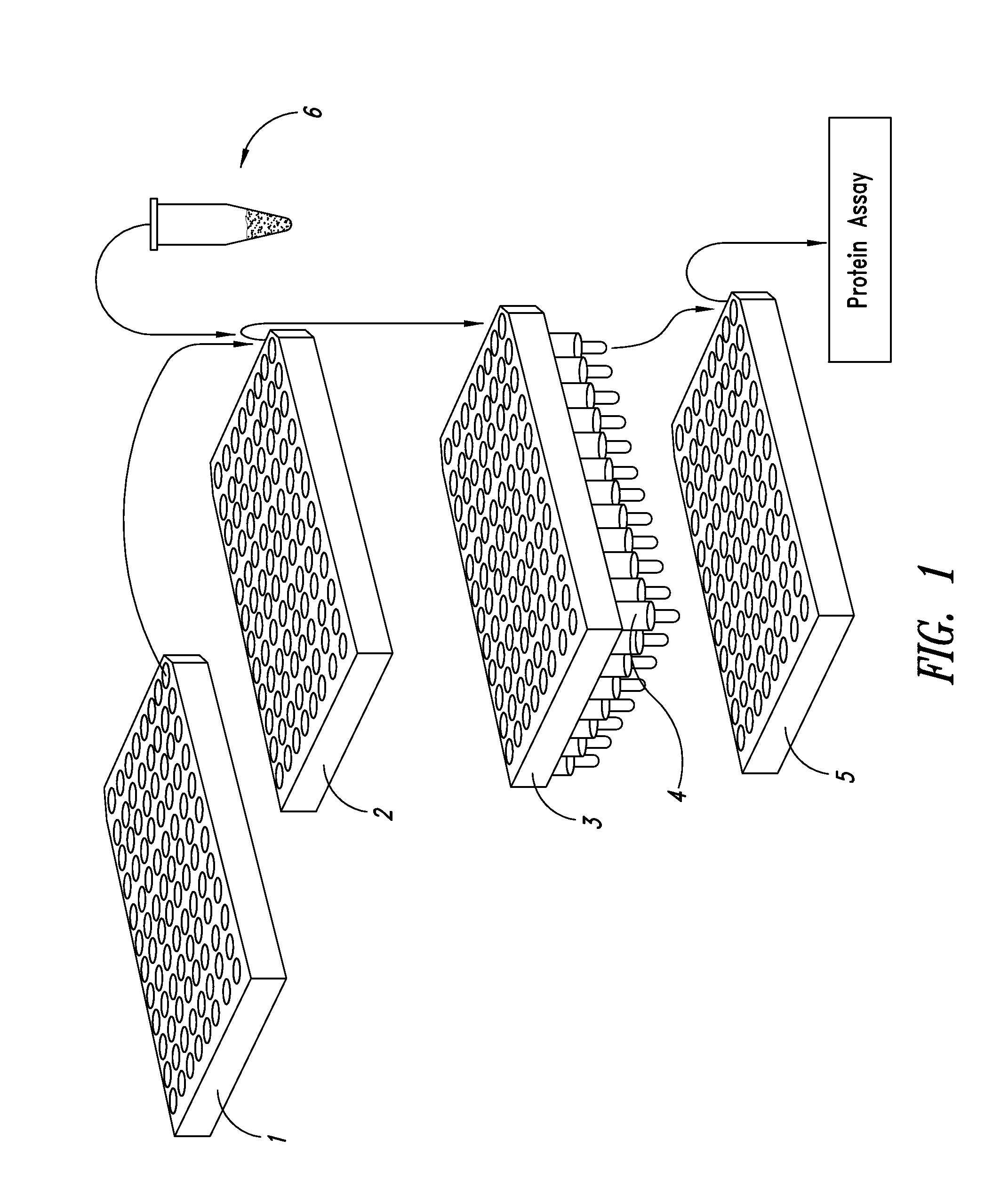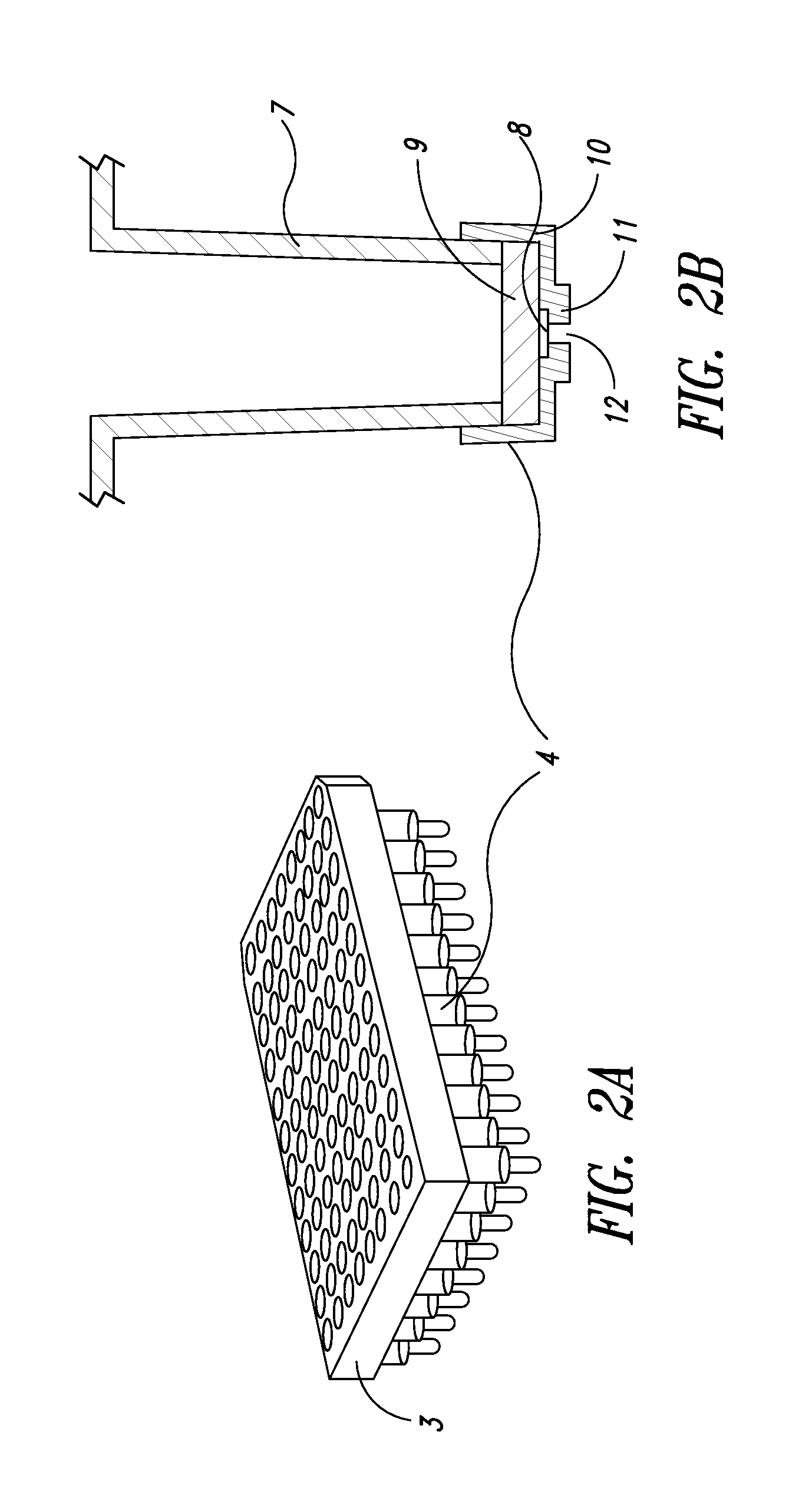Methods and kits for screening protein solubility
- Summary
- Abstract
- Description
- Claims
- Application Information
AI Technical Summary
Benefits of technology
Problems solved by technology
Method used
Image
Examples
example 1
Protein Solubility Profiling
[0105]This example demonstrates identification of solubility parameters that protect soluble protein samples from aggregation.
[0106]Proteins aggregate when exposed to certain stresses, and the modulation of this aggregation behavior in the presence of a variety of reagents and pH values can be analyzed with the disclosed methods and kits. A particular aggregation stress needs to be chosen, for instance elevated temperature, freeze-thawing cycles, exposure to air, long-term storage, addition of chemical reagents, surface exposure, liquid shear, intense light amongst others, to establish and analyze protein sample aggregation behavior (see Table 3 for a list with sample stresses). The screening kit and methods yield information on solution conditions that yield minimized aggregation when exposed to a particular stress. Prior to carrying out the experiment, one of the Stresses listed in Table 3 is selected and incorporated into the assay to analyze the prote...
example 2
Solubilization of an Aggregated Protein Sample
[0125]This example demonstrates use of the disclosed methods and kits for identification of conditions that solubilize reversibly aggregated protein samples. Note that some protein aggregation is irreversible and can therefore usually not be properly solubilized. The Protein Solubilization kit can be used however, to assess if further attempts to de-aggregate a particular protein sample are of use (i.e. consider giving up on an aggregated protein sample if the kit does not yield any solubilized protein).
[0126]Allow all reagents to assume equal temperature (4° C. or room temperature). For best temperature control equilibrate all kit solutions in a temperature-controlled 96-well block. The use of a PCR Thermal Cycler set at a constant temperature is recommended. Make sure that all reagents are free of any crystallization. If crystals are observed, incubate at room or elevated temperature for several hours until inorganic crystals are disso...
example 3
Solubility Profiling of Bovine Heart Cytochrome C
[0141]Bovine heart Cytochrome C Cytochrome is a colored protein with a MW of ca. 12 kDa. Bovine heart Cytochrome C (purchased from Aldrich Sigma) was dissolved in water at a concentration of 1 mg / ml and stored for 4 days at room temperature. 150 uL from each well in the OptiSol reagent plate (see Table 2) (OptiSol 30 kit, with Molecular Weight Cut Off 30 kDa filter plate) were transferred into the Reaction Plate. To this 10 uL aliquots of the Cytochrome solution were pipetted by slowly adding the Cytochrome C solution. The Reaction plate was sealed with tape to avoid dehydration.
[0142]The aggregation behavior was tested by applying a solution stress: incubating the Reaction plate at 37 C overnight. 150 uL from each well (omitting control well H3) were transferred into the corresponding well of the filter plate. A filter plate stack was prepared by combining the Collection Plate (bottom) with the Filter plate (MWCO 30 kDa filter plate)...
PUM
 Login to View More
Login to View More Abstract
Description
Claims
Application Information
 Login to View More
Login to View More - R&D
- Intellectual Property
- Life Sciences
- Materials
- Tech Scout
- Unparalleled Data Quality
- Higher Quality Content
- 60% Fewer Hallucinations
Browse by: Latest US Patents, China's latest patents, Technical Efficacy Thesaurus, Application Domain, Technology Topic, Popular Technical Reports.
© 2025 PatSnap. All rights reserved.Legal|Privacy policy|Modern Slavery Act Transparency Statement|Sitemap|About US| Contact US: help@patsnap.com



